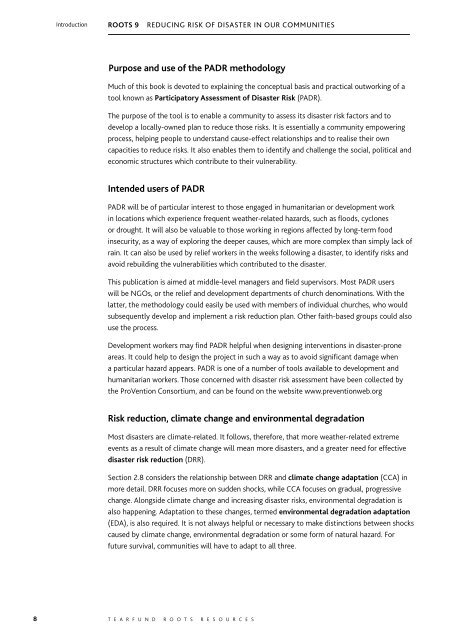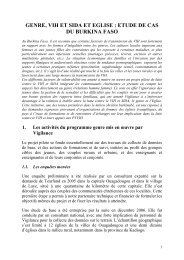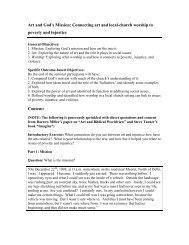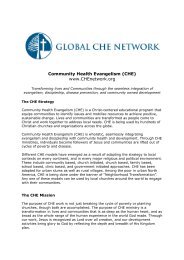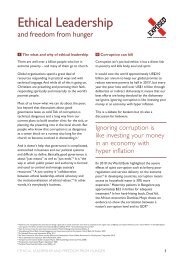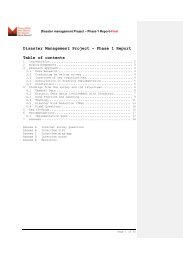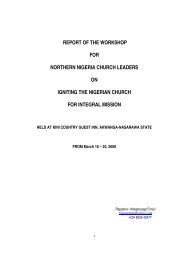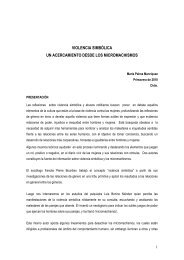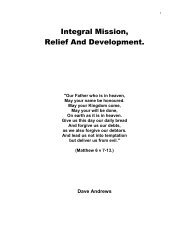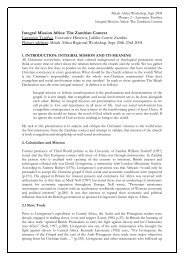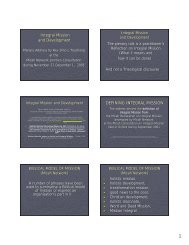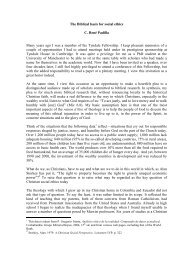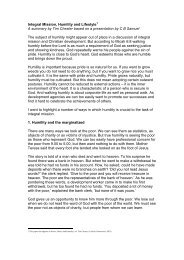Download - Micah Network
Download - Micah Network
Download - Micah Network
- No tags were found...
Create successful ePaper yourself
Turn your PDF publications into a flip-book with our unique Google optimized e-Paper software.
IntroductionROOTS 9REDUCING RISK OF DISASTER IN OUR COMMUNITIESPurpose and use of the PADR methodologyMuch of this book is devoted to explaining the conceptual basis and practical outworking of atool known as Participatory Assessment of Disaster Risk (PADR).The purpose of the tool is to enable a community to assess its disaster risk factors and todevelop a locally-owned plan to reduce those risks. It is essentially a community empoweringprocess, helping people to understand cause-effect relationships and to realise their owncapacities to reduce risks. It also enables them to identify and challenge the social, political andeconomic structures which contribute to their vulnerability.Intended users of PADRPADR will be of particular interest to those engaged in humanitarian or development workin locations which experience frequent weather-related hazards, such as floods, cyclonesor drought. It will also be valuable to those working in regions affected by long-term foodinsecurity, as a way of exploring the deeper causes, which are more complex than simply lack ofrain. It can also be used by relief workers in the weeks following a disaster, to identify risks andavoid rebuilding the vulnerabilities which contributed to the disaster.This publication is aimed at middle-level managers and field supervisors. Most PADR userswill be NGOs, or the relief and development departments of church denominations. With thelatter, the methodology could easily be used with members of individual churches, who wouldsubsequently develop and implement a risk reduction plan. Other faith-based groups could alsouse the process.Development workers may find PADR helpful when designing interventions in disaster-proneareas. It could help to design the project in such a way as to avoid significant damage whena particular hazard appears. PADR is one of a number of tools available to development andhumanitarian workers. Those concerned with disaster risk assessment have been collected bythe ProVention Consortium, and can be found on the website www.preventionweb.orgRisk reduction, climate change and environmental degradationMost disasters are climate-related. It follows, therefore, that more weather-related extremeevents as a result of climate change will mean more disasters, and a greater need for effectivedisaster risk reduction (DRR).Section 2.8 considers the relationship between DRR and climate change adaptation (CCA) inmore detail. DRR focuses more on sudden shocks, while CCA focuses on gradual, progressivechange. Alongside climate change and increasing disaster risks, environmental degradation isalso happening. Adaptation to these changes, termed environmental degradation adaptation(EDA), is also required. It is not always helpful or necessary to make distinctions between shockscaused by climate change, environmental degradation or some form of natural hazard. Forfuture survival, communities will have to adapt to all three.8 T E A R F U N D R O O T S R E S O U R C E S


